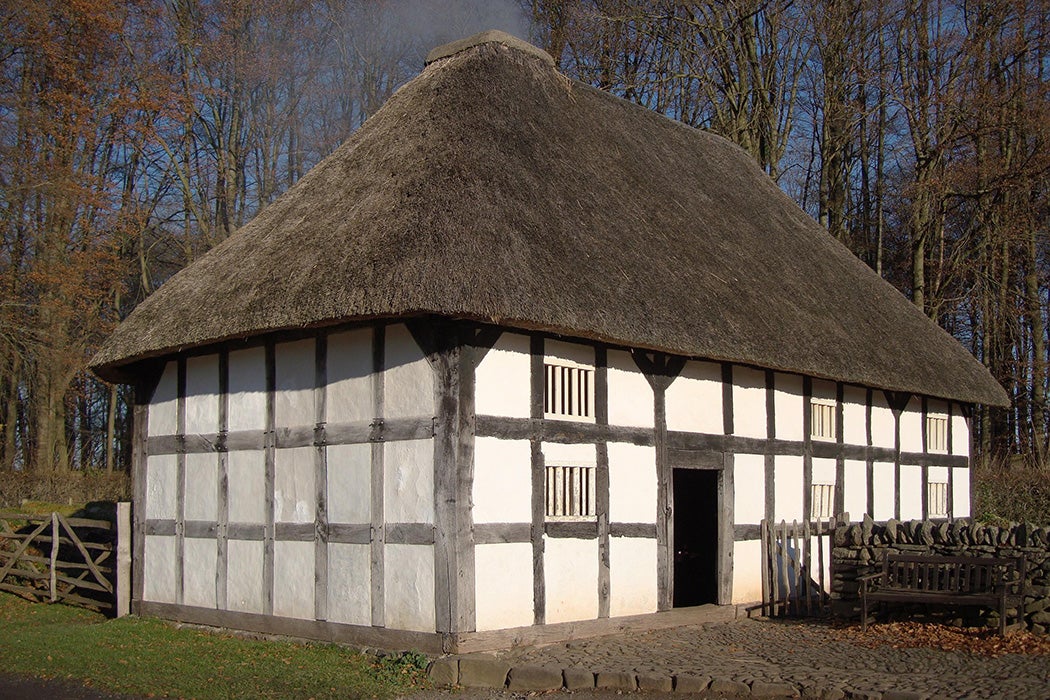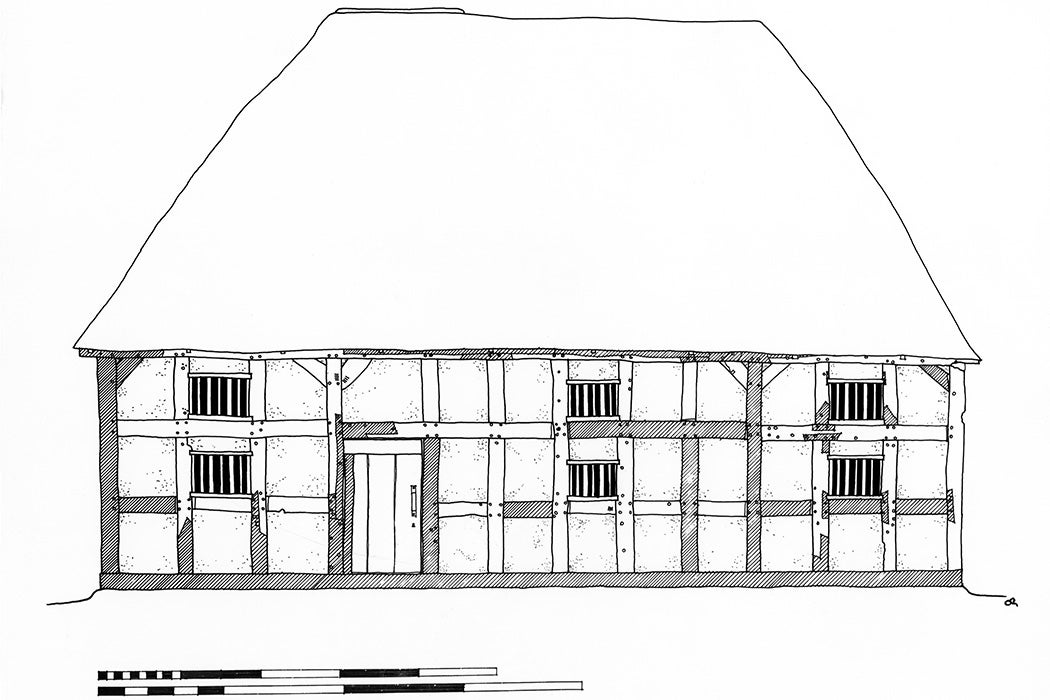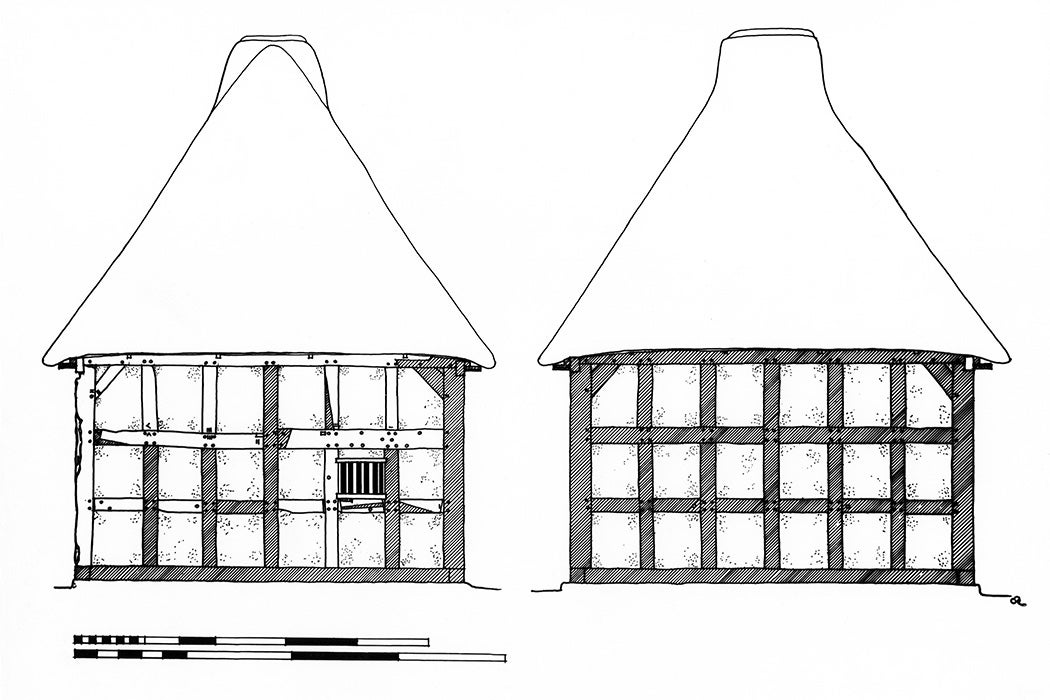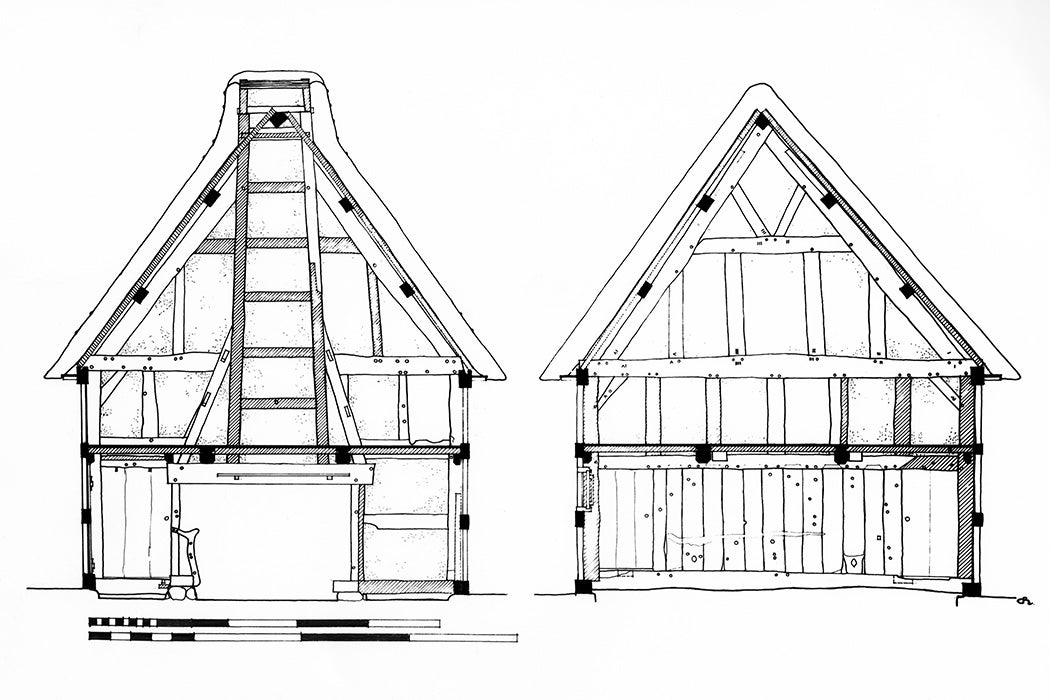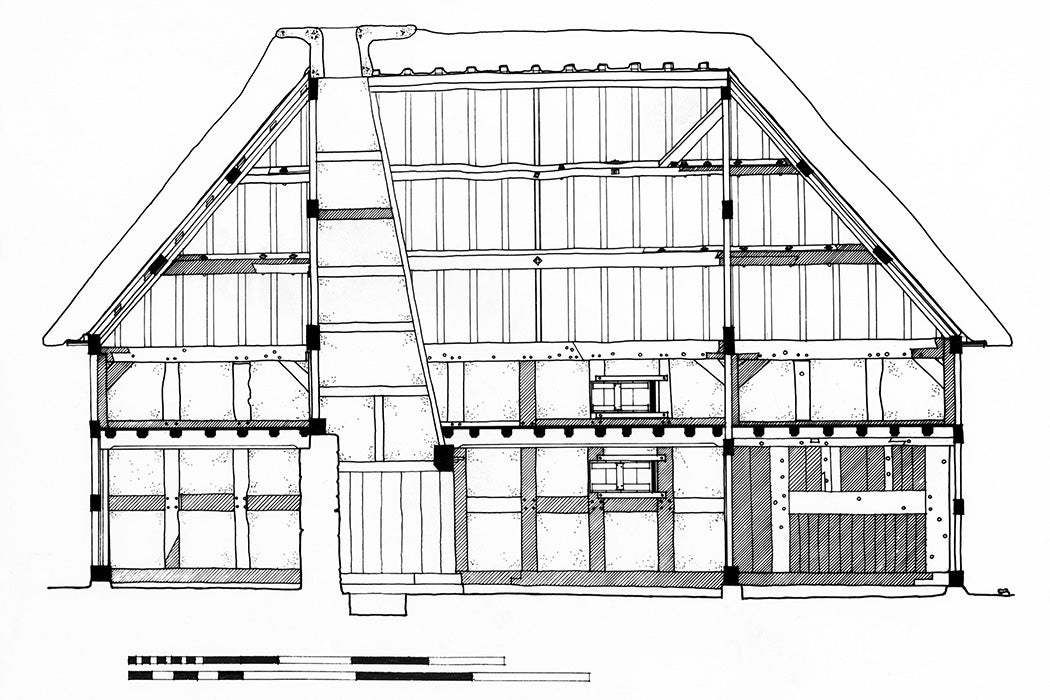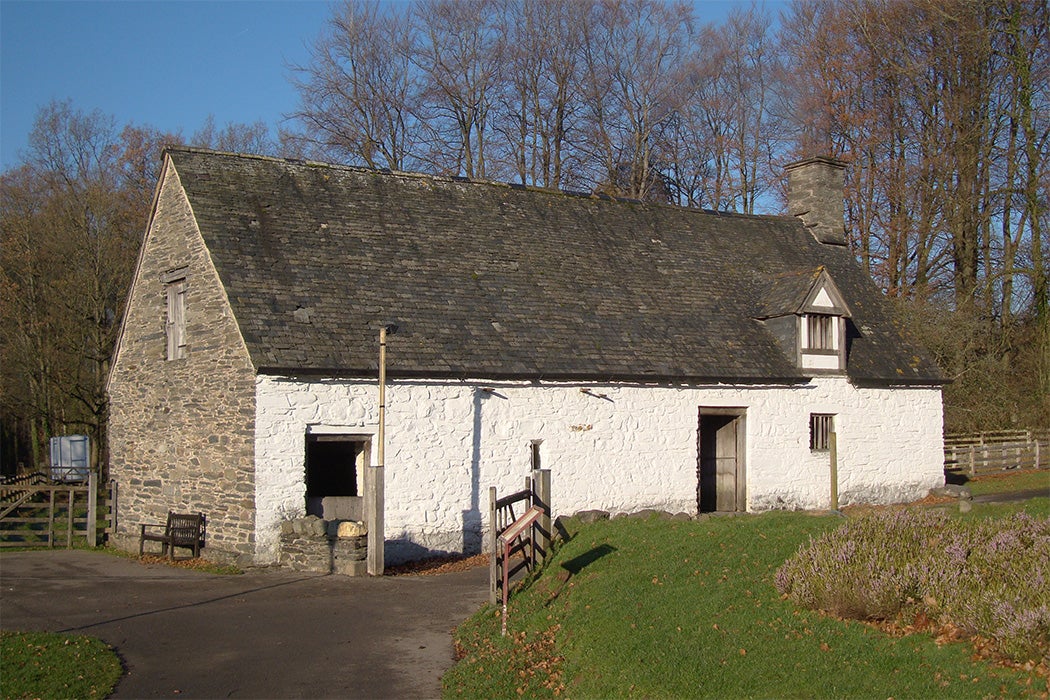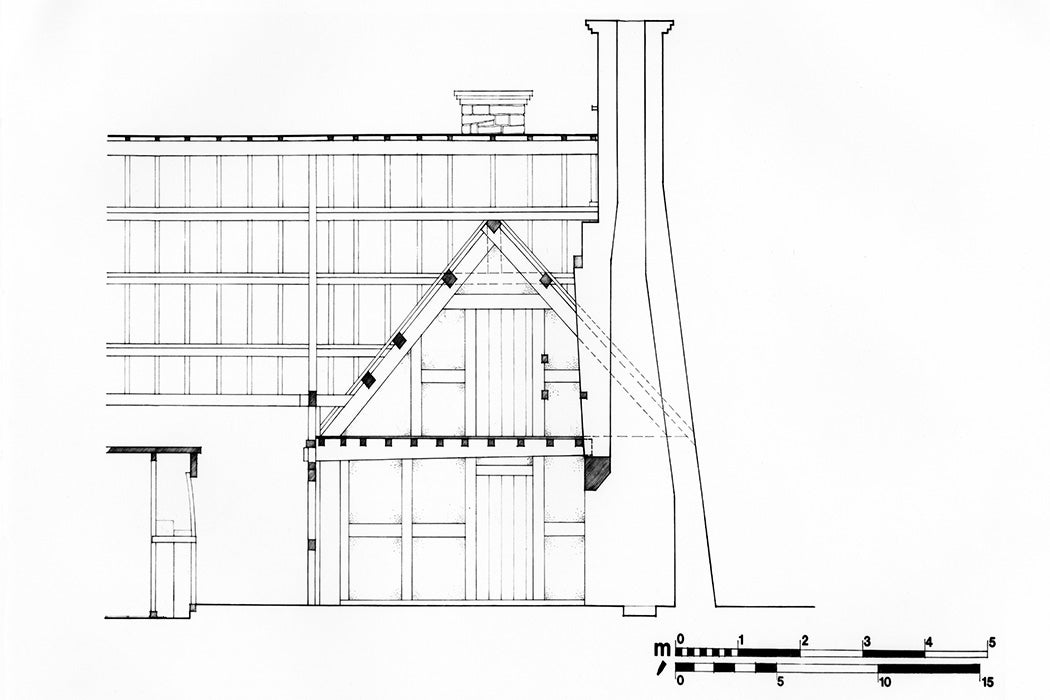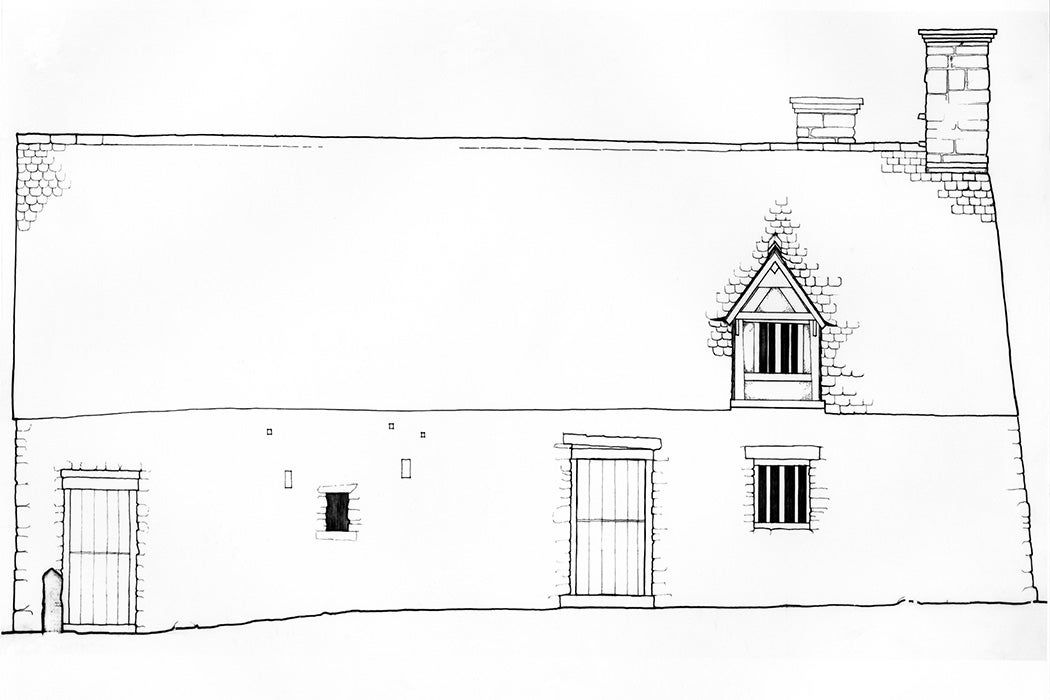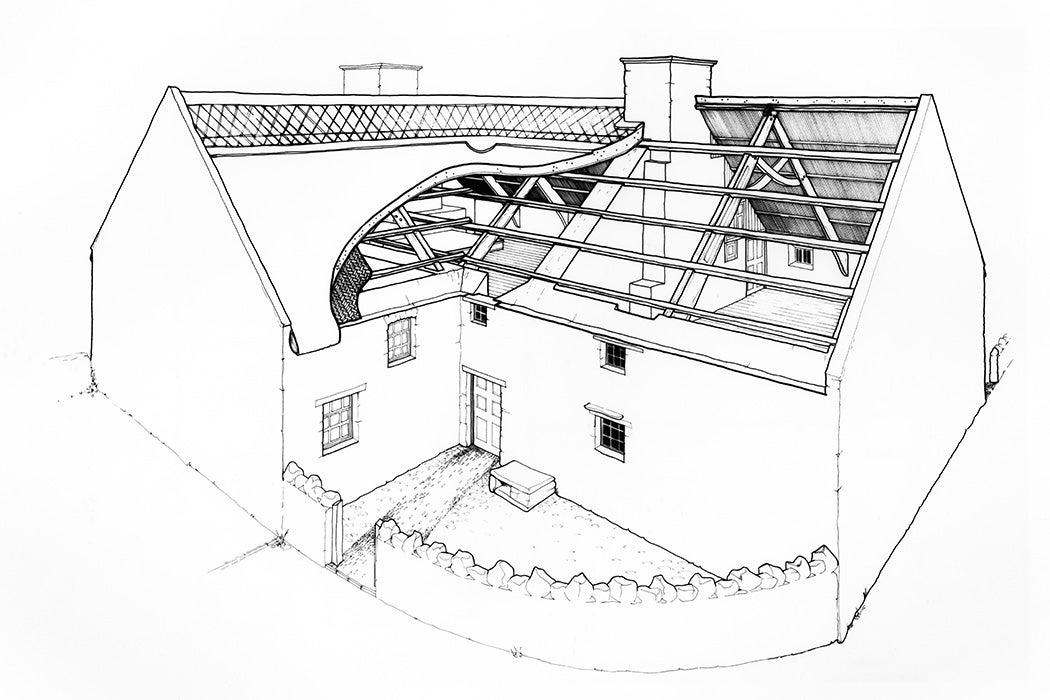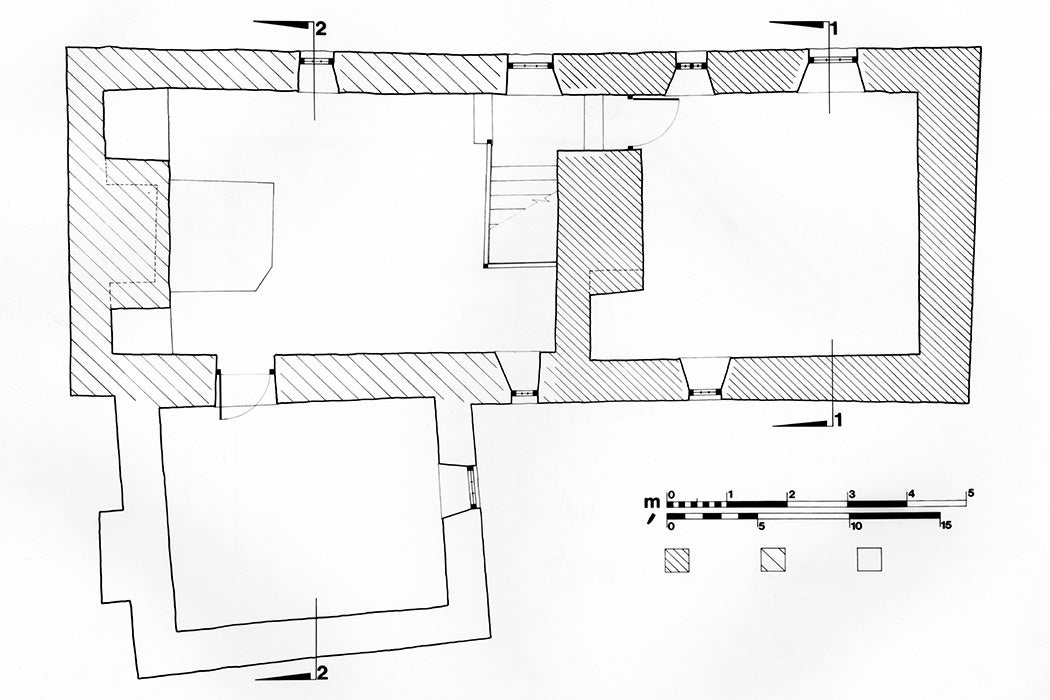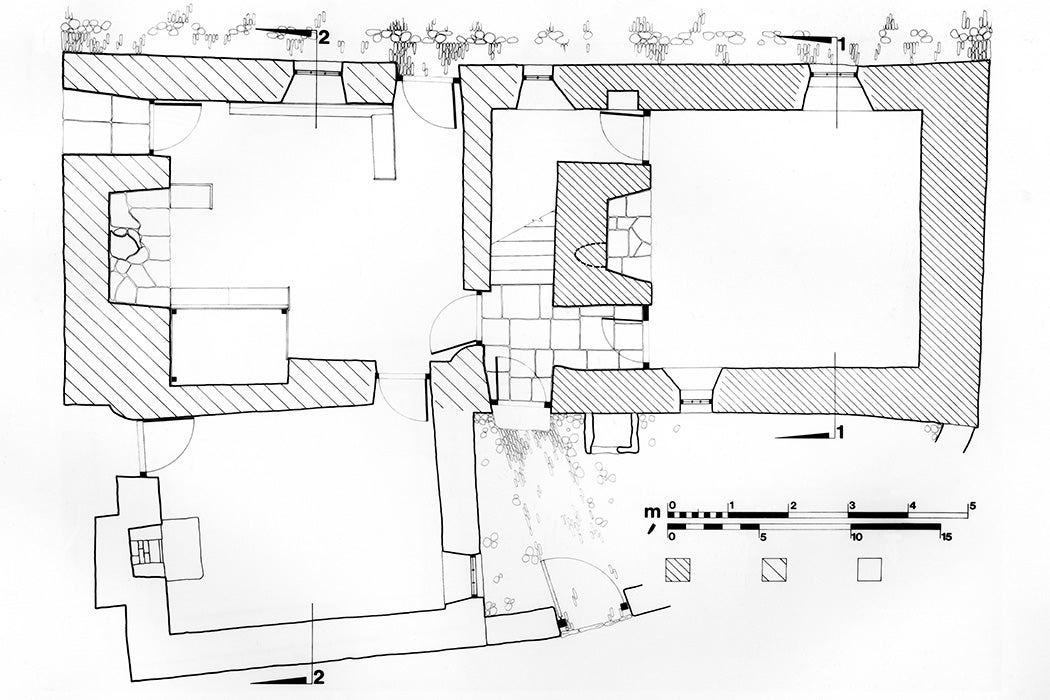The icon indicates free access to the linked research on JSTOR.
“What therefore is a folk museum?”


This is the question Iorwerth C. Peate attempted to answer during a lecture at the Royal Society of Arts, Manufactures and Commerce on Wednesday, April 27, 1949. A scholar of folklore and Keeper-in-Charge of the recently opened Welsh Folk Museum, Peate spoke about the “problems confronting folk museums in Britain”—everything from lack of cooperation between government departments to the difficulty of working with local building materials—while celebrating the success of the new museum in Cardiff.
Hired in 1927 to catalogue what would come be known as “the folk collections” at the National Museum of Wales, Peate became Keeper of the Department of Folk Life when it was created by the museum in 1936. Inspired by the work of Arthur Hazelius at the Museum of Swedish Life (Nordiska Museet)—but even more by Hazelius’s founding of Skansen, the world’s first open-air museum, in 1891—Peate used his accumulating knowledge to found a similar museum in Wales. The Welsh Folk Museum, a constituent unit of the National Museum of Wales, opened on the grounds of St. Fagans Castle in July 1948.
![]()
Abernodwydd farmhouse is a timber-framed thatched farmhouse, built in 1678 as an open-hall with a fire in the centre of the floor and open to the roof. Altered in 1708 by the construction of a stone-backed fireplace and timber-framed chimney, and the incorporation of an upper floor. Originally located in Llangadfan, Montgomeryshire, and moved to St. Fagans in 1951. Special Collections and Archives, Cardiff University via
National Museum of Wales
![]()
Abernodwydd farmhouse is a timber-framed thatched farmhouse, built in 1678 as an open-hall with a fire in the centre of the floor and open to the roof. Altered in 1708 by the construction of a stone-backed fireplace and timber-framed chimney, and the incorporation of an upper floor. Originally located in Llangadfan, Montgomeryshire, and moved to St. Fagans in 1951. Special Collections and Archives, Cardiff University via
National Museum of Wales
![]()
Abernodwydd farmhouse is a timber-framed thatched farmhouse, built in 1678 as an open-hall with a fire in the centre of the floor and open to the roof. Altered in 1708 by the construction of a stone-backed fireplace and timber-framed chimney, and the incorporation of an upper floor. Originally located in Llangadfan, Montgomeryshire, and moved to St. Fagans in 1951. Special Collections and Archives, Cardiff University via
National Museum of Wales
![]()
Abernodwydd farmhouse is a timber-framed thatched farmhouse, built in 1678 as an open-hall with a fire in the centre of the floor and open to the roof. Altered in 1708 by the construction of a stone-backed fireplace and timber-framed chimney, and the incorporation of an upper floor. Originally located in Llangadfan, Montgomeryshire, and moved to St. Fagans in 1951. Special Collections and Archives, Cardiff University via
National Museum of Wales
![]()
Abernodwydd farmhouse is a timber-framed thatched farmhouse, built in 1678 as an open-hall with a fire in the centre of the floor and open to the roof. Altered in 1708 by the construction of a stone-backed fireplace and timber-framed chimney, and the incorporation of an upper floor. Originally located in Llangadfan, Montgomeryshire, and moved to St. Fagans in 1951. Special Collections and Archives, Cardiff University via
National Museum of Wales
![]()
Abernodwydd farmhouse is a timber-framed thatched farmhouse, built in 1678 as an open-hall with a fire in the centre of the floor and open to the roof. Altered in 1708 by the construction of a stone-backed fireplace and timber-framed chimney, and the incorporation of an upper floor. Originally located in Llangadfan, Montgomeryshire, and moved to St. Fagans in 1951. Special Collections and Archives, Cardiff University via
National Museum of Wales
![]()
Abernodwydd farmhouse is a timber-framed thatched farmhouse, built in 1678 as an open-hall with a fire in the centre of the floor and open to the roof. Altered in 1708 by the construction of a stone-backed fireplace and timber-framed chimney, and the incorporation of an upper floor. Originally located in Llangadfan, Montgomeryshire, and moved to St. Fagans in 1951. Special Collections and Archives, Cardiff University via
National Museum of Wales
A son of a wheelwright and carpenter, Peate placed the craftsperson at the center of the Welsh national narrative, a decided contrast to an identity built on the industrial culture valorized during World War II.
“[T]he image of the mining village carried special significance during the war,” historian Thomas Hajkowski points out in his book on the BBC and national identity.
First, coal was vital to the war effort, and demand for fuel had revitalized the economy of the valleys. Second, the mining village powerfully represented the nation at war. […] the values of the miners and the mining villages interlocked effectively with the ideals of a nation fighting a total war for its survival: community, camaraderie, resilience, and cheerfulness in the face of great tribulation.
Peate’s emphasis on crafts, furniture, and construction methods and materials—an approach demonstrated in his books Y Crefftwr yng Nghymru (The Craftsman in Wales, 1933) and The Welsh House (1940)—offered a compelling alternative to the persistent imagining of rural Wales through its industrial valleys.
![]()
Cilewent farmhouse is a cruck and timber-framed house built about 1470 as an open hall. The original timber walls were rebuilt in stone in 1734. Originally located in Cilewent, Llansanffraid Cwmteuddwr, nr Rhayader, Powys, and moved to St Fagans in 1959. Special Collections and Archives, Cardiff University via
National Museum of Wales
![]()
Cilewent farmhouse is a cruck and timber-framed house built about 1470 as an open hall. The original timber walls were rebuilt in stone in 1734. Originally located in Cilewent, Llansanffraid Cwmteuddwr, nr Rhayader, Powys, and moved to St Fagans in 1959. Special Collections and Archives, Cardiff University via
National Museum of Wales
![]()
Cilewent farmhouse is a cruck and timber-framed house built about 1470 as an open hall. The original timber walls were rebuilt in stone in 1734. Originally located in Cilewent, Llansanffraid Cwmteuddwr, nr Rhayader, Powys, and moved to St Fagans in 1959. Special Collections and Archives, Cardiff University via
National Museum of Wales
![]()
Cilewent farmhouse is a cruck and timber-framed house built about 1470 as an open hall. The original timber walls were rebuilt in stone in 1734. Originally located in Cilewent, Llansanffraid Cwmteuddwr, nr Rhayader, Powys, and moved to St Fagans in 1959. Special Collections and Archives, Cardiff University via
National Museum of Wales
![]()
Cilewent farmhouse is a cruck and timber-framed house built about 1470 as an open hall. The original timber walls were rebuilt in stone in 1734. Originally located in Cilewent, Llansanffraid Cwmteuddwr, nr Rhayader, Powys, and moved to St Fagans in 1959. Special Collections and Archives, Cardiff University via
National Museum of Wales
![]()
Cilewent farmhouse is a cruck and timber-framed house built about 1470 as an open hall. The original timber walls were rebuilt in stone in 1734. Originally located in Cilewent, Llansanffraid Cwmteuddwr, nr Rhayader, Powys, and moved to St Fagans in 1959. Special Collections and Archives, Cardiff University via
National Museum of Wales
![]()
Cilewent farmhouse is a cruck and timber-framed house built about 1470 as an open hall. The original timber walls were rebuilt in stone in 1734. Originally located in Cilewent, Llansanffraid Cwmteuddwr, nr Rhayader, Powys, and moved to St Fagans in 1959. Special Collections and Archives, Cardiff University via
National Museum of Wales
The St. Fagans grounds included an Elizabethan manor set in eighty acres of parkland, and Peate described plans for a modern museum building with galleries. More important to him, however, was the open-air collection of buildings to be moved from various parts of Wales and re-erected on museum grounds, providing, in his words, an “ecological setting, where specimens are exhibited in houses, while houses are set out in their true environment suitably planned and planted.”
The “suitably planned and planted” environment opened to the public in 1949, and several vernacular buildings, including cottages, farmhouses, and barns, opened in 1951. Abernodwydd Farmhouse, a timber-framed thatched structure built in 1678 in Llangadfan, Montgomeryshire, was one of the first relocated buildings to open. Kennixton Farmhouse, built in Kennexstone, Llangennith, Gower, in 1610, was added to the collection in 1952. Pen-rhiw Chapel, originally built as a barn during the mid-eighteenth century, opened to the public in 1956. The cruck and timber-framed Cilewent House opened in 1959.
![]()
Kennixton farmhouse is a large stone-built farmhouse, originally constructed in 1610 as a gable-entry dwelling with a single room on the ground floor and a bedroom above. About 1680, a large cegin (kitchen) was added, and a staircase. About 1750, a back kitchen was added. Originally located in Kennexstone, Llangennith, Gower, and moved to St Fagans in 1952. Special Collections and Archives, Cardiff University via
National Museum of Wales
![]()
Kennixton farmhouse is a large stone-built farmhouse, originally constructed in 1610 as a gable-entry dwelling with a single room on the ground floor and a bedroom above. About 1680, a large cegin (kitchen) was added, and a staircase. About 1750, a back kitchen was added. Originally located in Kennexstone, Llangennith, Gower, and moved to St Fagans in 1952. Special Collections and Archives, Cardiff University via
National Museum of Wales
![]()
Kennixton farmhouse is a large stone-built farmhouse, originally constructed in 1610 as a gable-entry dwelling with a single room on the ground floor and a bedroom above. About 1680, a large cegin (kitchen) was added, and a staircase. About 1750, a back kitchen was added. Originally located in Kennexstone, Llangennith, Gower, and moved to St Fagans in 1952. Special Collections and Archives, Cardiff University via
National Museum of Wales
![]()
Kennixton farmhouse is a large stone-built farmhouse, originally constructed in 1610 as a gable-entry dwelling with a single room on the ground floor and a bedroom above. About 1680, a large cegin (kitchen) was added, and a staircase. About 1750, a back kitchen was added. Originally located in Kennexstone, Llangennith, Gower, and moved to St Fagans in 1952. Special Collections and Archives, Cardiff University via
National Museum of Wales
![]()
Kennixton farmhouse is a large stone-built farmhouse, originally constructed in 1610 as a gable-entry dwelling with a single room on the ground floor and a bedroom above. About 1680, a large cegin (kitchen) was added, and a staircase. About 1750, a back kitchen was added. Originally located in Kennexstone, Llangennith, Gower, and moved to St Fagans in 1952. Special Collections and Archives, Cardiff University via
National Museum of Wales
![]()
Kennixton farmhouse is a large stone-built farmhouse, originally constructed in 1610 as a gable-entry dwelling with a single room on the ground floor and a bedroom above. About 1680, a large cegin (kitchen) was added, and a staircase. About 1750, a back kitchen was added. Originally located in Kennexstone, Llangennith, Gower, and moved to St Fagans in 1952. Special Collections and Archives, Cardiff University via
National Museum of Wales
![]()
Kennixton farmhouse is a large stone-built farmhouse, originally constructed in 1610 as a gable-entry dwelling with a single room on the ground floor and a bedroom above. About 1680, a large cegin (kitchen) was added, and a staircase. About 1750, a back kitchen was added. Originally located in Kennexstone, Llangennith, Gower, and moved to St Fagans in 1952. Special Collections and Archives, Cardiff University via
National Museum of Wales
![]()
Kennixton farmhouse is a large stone-built farmhouse, originally constructed in 1610 as a gable-entry dwelling with a single room on the ground floor and a bedroom above. About 1680, a large cegin (kitchen) was added, and a staircase. About 1750, a back kitchen was added. Originally located in Kennexstone, Llangennith, Gower, and moved to St Fagans in 1952. Special Collections and Archives, Cardiff University via
National Museum of Wales
As museum director John Williams-Davies would later write, “Peate had what we today would consider an idealized and overly romantic view of craftsmen and an exaggerated view of their role in rural society.” Even so, his focus on rural folklife produced an open-air collection and museum that still stands at forefront of research and exhibition of rural crafts in the British Isles.
“Over sixty-five crafts are currently represented in the collection,” wrote Williams-Davies in 1989, “many of them in the form of complete workshops. The range and type of crafts naturally reflect the nature of traditional Welsh rural society.”
Today, the collection at St. Fagans Castle includes more than forty buildings. Photographs, plans, and architectural drawings of representative examples can be viewed via in the St Fagans National Museum of History.
Editor’s Note: This collection is no longer available via JSTOR; the links have been updated to reflect this.
Support JSTOR Daily! Join our new membership program on Patreon today.

Resources
JSTOR is a digital library for scholars, researchers, and students. JSTOR Daily readers can access the original research behind our articles for free on JSTOR.
By: Iorwerth C. Peate
Journal of the Royal Society of Arts, Vol. 97, No. 4803 (9 September, 1949), pp. 794–806
RSA The Royal Society for Arts, Manufactures and Commerce
By: W. S. Purchon
The Architectural Review, Vol. 53 (February 1923), pp. 45–51
London: Emap Construct, etc.
By: Iorwerth C. Peate
Journal of the Folklore Institute, Vol. 2, No. 3 (December 1965), pp. 314–316
Indiana University Press
By: Mike Crang
Ecumene, Vol. 6, No. 4 (October 1999), pp. 447–470
Sage Publications, Inc.
By: Review by: Laura Beers
The Journal of Modern History, Vol. 84, No. 2, The Jew in the Modern European Imaginary (June 2012), pp. 479–480
The University of Chicago Press
By: Iorwerth C. Peate
Béaloideas, Iml. 15, Uimh 1/2 (June-December 1945), pp. 247–250
An Cumann Le Béaloideas Éireann/Folklore of Ireland Society
By: John Williams-Davies
Journal of Design History, Vol. 2, No. 2/3 (1989), pp. 215–218
Oxford University Press on behalf of Design History Society



